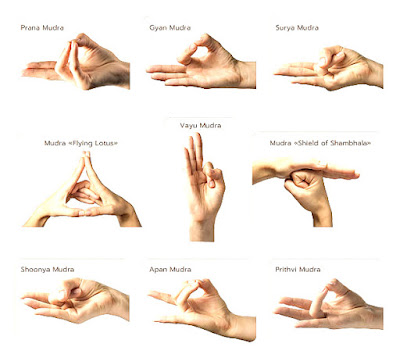Mudras' Neuro-mechanics:
- The casual spectator or newcomer to Yoga may be tempted to think that the beauty of the gesture, or the strength of the esthete, is what summons the Devatta, the Deva, and the Devis, or that the whole process is purely symbolic.
- The opposite could not be farther from the truth. The Mudra does regulate mind-brain processes and activities inside the neurological system by connecting different sympathetic and pars-sympathetic nerve terminals, which has a solid foundation for acceptance.
- The division of the human nervous system into afflex 13 and reflex systems is accepted in neurology. Afferent or sensory responses, as well as efferent or motor responses, are carried via the afflex. The reflex system functions similarly to a high-voltage electrical system's grounding wire.
- The human body may be divided into ten different sections in Yoga, five on each side of a median that runs from the top of the head to the base of the spine, ending in each of the toes and fingers.
- The body is split into 10 Pranic regions, each governed by one of five main Pranic flows, which control the head, chest, belly, pelvis, and extremities.
- Within particular nerve regions, five lesser Pranas are more quietly at work.
The real purpose of Pranayama is to regulate the ten flows of Prana Vayu and the Prana Vahaka nerve impulses that travel via the Pancha Kosha's Nadis or nerves.
- The particular nerves (as in Jnana Mudra) are linked in a closed nerve circuit when the fingers of the hands are joined together in the Hastha Mudra.
- An open nerve circuit is represented by the fingers that are not in use.
- The cranial nerve circuits of the head and the upper half of the body in the pnetimogastric or vagus system are linked when the hands are joined together (as in the Namaskara Mudra).
- The vagus nerves and the facial nerves are brought together in a closed circuit when the hands are aligned on the face (as in Yoni Mudra).
- The vagus system is closed circuited with the cerebro-spinal nerves when the hands and feet are joined (as in Yoga Mudra).
- When a position like Parva Asana, also known as the Past Posture, is performed, all of the body's nerve systems are pushed into a frenzy of activity.
- The Yogi does Parva Asana to glimpse into his previous incarnations and recall previous incarnations. Purva Janma Mudra or Parva Mudra are other names for it.
You may also want to read more about Yoga here.
You may also want to read more about Yoga Asanas and Exercises here.

